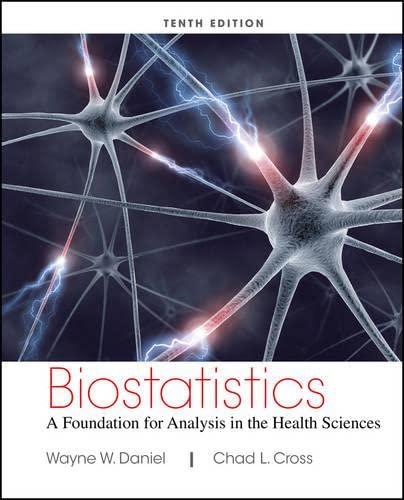Methadone is often prescribed in the treatment of opioid addiction and chronic pain. Krantz et al. (A-2)
Question:
Methadone is often prescribed in the treatment of opioid addiction and chronic pain. Krantz et al.
(A-2) studied the relationship between dose of methadone and the corrected QT (QTc) interval for 17 subjects who developed torsade de pointes (ventricular tachycardia nearly always due to medications). QTc is calculated from an electrocardiogram and is measured in mm/sec. A higher QTc value indicates a higher risk of cardiovascular mortality. A question of interest is how well one can predict and estimate the QTc value from a knowledge of methadone dose. This question is typical of those that can be answered by means of regression analysis. Since QTc is the variable about which we wish to make predictions and estimations, it is the dependent variable. The variable methadone dose, knowledge of which will be used to make the predictions and estimations, is the independent variable.
Methadone Dose Methadone Dose (mg/day) QTc (mm/sec) (mg/day) QTc (mm/sec)
1000 600 650 785 550 625 600 765 97 560 660 611 90 585 270 600 85 590 680 625 126 500 540 650 300 700 600 635 110 570 330 522 65 540 Source: Mori J. Krantz, Ilana B. Kutinsky, Alastair D. Roberston, and Philip S. Mehler, “Dose-Related Effects of Methadone on QT Prolongation in a Series of Patients with Torsade de Pointes,” Pharmacotherapy, 23 (2003), 802–805.
Step by Step Answer:

Biostatistics A Foundation For Analysis In The Health Sciences
ISBN: 9781118302798
10th Edition
Authors: Wayne W. Daniel, Chad L. Cross






